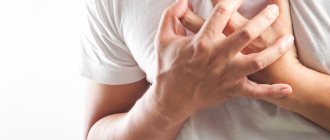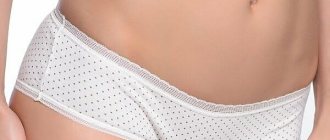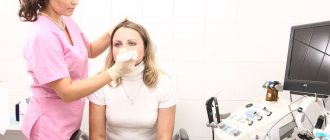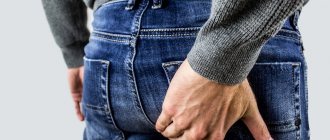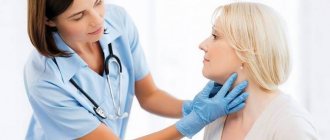You can identify this or that disease not only in the hospital, but also by being able to “listen” to your body - as soon as you feel unpleasant sensations, you immediately need to understand what could have caused the disease and for what reasons.
Of course, no one exempts you from going to the clinic; you definitely need to see a specialist. But, the patient's correct understanding of the pain, where it comes from, will help the doctor make the correct diagnosis.
Most people know that the digestive system includes the oral cavity with the salivary glands, the esophagus, the stomach and the intestines. Maybe they will also name the pancreas.
But few people remember a small and inconspicuous organ called the gallbladder. This organ does not remind itself of itself until it is affected by disease.
It is the gallbladder that is necessary for normal digestion, absorption of nutrients from food and good health. Our article is similar to where this organ is located in the body and what functions it has.
Where is the gallbladder located?
This pear-shaped organ is located on the lower surface of the liver, in which bile is produced and subsequently enters the bladder. Next, the liquid enters the duodenum, where it participates in the digestion process. It has a strong destructive effect, so in the normal state of the body it does not come into contact with either the intestines or the pancreas.
The main role of the organ is to store bile until food begins to enter the stomach. This liquid performs an antibacterial function, preventing rotting processes in the intestines, helps break down fats, and improves the absorption of proteins and carbohydrates. It enhances the motor and secretory functions of the small intestine, reduces the increased acidity of gastric juice, and has a bacteriostatic effect.
Bile and its functions
Bile is a liquid whose color ranges from yellow to brown. The taste is bitter. It is produced by liver cells (hepatocytes), separating into its individual ducts, flowing into the bladder. More than one liter of secretion is produced in 24 hours.
Compound
Substances used by the body are removed from the human body with bile; this determines its composition. The secret consists of:
- protein compounds;
- amino acids;
- bile acids;
- sodium and potassium ions;
- phospholipids;
- immunoglobulins;
- bilirubin;
- cholesterol;
- mucus;
- metals
Bile acids are compounds with glycocol and taurine (80% to 20%).
If carbohydrates predominate in food, the production of glycocholic acids increases, protein foods stimulate the production of taurocholic acids. There are two types of it:
- hepatic, yellow and transparent, or young with enzyme activity pH 7–8 and density 1.01–1.02;
- vesicular, more concentrated, or mature, with a relative density of 1.03–1.05 and a lower pH.
The yellow color of the secretion is due to the pigment (bilirubin), which is the residual products of the breakdown of blood cells excreted by the liver. Contains:
- water - 85%;
- bile acids - 6%;
- pigments and mucin - 4%;
- fats - 3%;
- substances of mineral origin - 1%;
- other substances 1%.
Functions of bile in the human body
Functions
The active complex of the liquid is a compound based on bile acids, bilirubin and phospholipids, with their help the breakdown and absorption of fats is carried out.
Fluid produced by the liver:
- directly affects the activity of enzymes produced by the pancreas and intestines that take part in digestion (stopping the activity of pepsin and activating lipase);
- affects the breakdown and absorption of water-insoluble fatty acids and proteins;
- ensures the contractile function of the intestine and the functioning of its mucosa;
- has a bacteriostatic effect in the intestines;
- affects the absorption of vitamins and calcium metabolism.
In addition, she is an active participant in metabolism:
- hydrocarbon and water;
- vitamin and fat;
- porphyrin and protein.
The role of the gallbladder in the human body, the quality of its functions depends on its condition and individual anatomical features.
How does your gallbladder hurt?
The main symptom of any disease is characterized by the difference in the manifestation of the patient’s conditions. The main provocateurs of pain syndrome are the following anomalies:
- metabolic disorders in the body;
- the presence of chronic, newly acquired diseases;
- inflammatory processes localized in the bladder and ducts;
- getting injured;
- the presence of congenital pathologies.
How does your gallbladder hurt? More details about pain syndromes below.
Cholelithiasis
The development of the disease is facilitated by metabolic disorders in the body, changes in the consistency of bile, unbalanced nutrition, insufficient physical activity, increased body weight, and hormonal imbalance. The intensity of the pain syndrome directly depends on the number, size of stones in the bladder, and location. The initial stages of the disease are characterized by sluggish symptoms, which subsequently increase significantly.
In this case, the following signs of gallstone disease appear:
- slight cutting sensations in the right side of the hypochondrium, radiating to the scapular region, shoulder joint, arm;
- urge to vomit;
- feeling of fullness in the abdomen, increased gas formation;
- bitter taste in the mouth.
When the bile ducts are blocked by stony substances, a sharp, unbearable pain sensation occurs, which intensifies during a sigh or a change in body position. Quite often this condition is accompanied by nausea and vomit. Unpleasant symptoms can be provoked by excessive physical exertion, shaking while riding in public transport, and sudden turns of the body.
Cholecystitis, cholesterosis
An inflammatory process that forms in the mucous membrane of an organ. The main causes of the pathology are poor nutrition, diseases of the biliary tract (presence of stones in the bladder), inflammatory processes developing in adjacent organs.
With the acute development of cholecystitis, the following conditions are present:
- cutting sensations in the liver area;
- hyperthermia (up to 39-40 degrees);
- pathological changes in the functioning of the digestive system (nausea, vomiting, belching, bowel dysfunction);
- drying out of the oral mucosa;
- feverish conditions;
- increased fatigue.
In the chronic stage of the disease there are remissions and relapses. In the initial stage of the disease, there is practically no discomfort; periodic attacks of nausea, weakness, and dull pain in the right hypochondrium are possible.
Bend of the gallbladder
A bend in the gallbladder indicates a decrease in the functional abilities of the organ. The following pathologies contribute to bending:
- congenital abnormalities of the anatomical structure;
- deformation, displacement of neighboring organs as a result of excessive physical activity;
- pathological enlargement of the liver.
The pathology is accompanied by such conditions as:
- pain in the lower abdomen;
- urge to vomit;
- general intoxication of the body, accompanied by nausea and weakness;
- increased sweating;
- accumulation of gases in the intestines.
The occurrence of pathology provokes the development of pancreatitis, gastric ulcer, the formation of erosions on the mucous membranes of the stomach, and cholelithiasis. The disease is dangerous due to the risk of cracks that can release secretory fluid into the abdominal cavity.
Dyskinesia
Biliary dyskinesia is a violation of the discharge of secretory fluid due to a malfunction of the biliary tract, the organ itself. The disease is provoked by frequent stressful situations in which the patient finds himself, heavy physical labor, and lack of diet.
The initial stage of the disease is not characterized by particularly pronounced symptoms. Further development is manifested by the following states:
- pain of a pulling, aching nature, localized in the right hypochondrium;
- persistent loss of appetite;
- the presence of belching, accompanied by a bitter taste;
- nauseating conditions;
- bloating.
Tumor
Symptoms characteristic of cancerous tumors appear depending on the severity of the pathology. In the first stages of cancer development, there is no pain.
Subsequent stages are characterized by the presence of the following symptoms:
- pronounced pain that cannot be relieved by taking antispasmodic medications;
- disruption of the gastrointestinal tract, accompanied by intestinal upset;
- yellowing of the skin;
- sudden weight loss;
- accumulation of free fluid in the abdominal cavity, accompanied by a sharp deterioration in the general condition of the patient.
What does it consist of?
This organ is hollow inside, filled with greenish bile. Its walls consist of three layers formed by various tissues. The outer layer is represented by fibrous serous tissue - smooth, shiny, elastic. The middle layer consists of muscle tissue. The inner layer is formed by the mucous membrane. All these shells are held together by connective tissue.
In case of damage by pathogenic microorganisms and tumors, the mucous membrane is primarily affected. Inflammatory processes also begin with it.
To relieve inflammation, it is necessary to take antibiotics or other antibacterial drugs - depending on the pathogen, anti-inflammatory and painkillers. If the outflow of bile is impaired, choleretic and antispasmodic drugs are used. Taking pharmaceutical drugs is practically useless in the absence of a proper diet.
If conservative treatment, subject to the regimen and dosage of medications, does not give a lasting positive result and if the patient’s condition worsens, a decision is made to dilate the ducts, remove sand and stones from the cavity of the gallbladder, or even the gallbladder itself - cholecystectomy.
Stones are usually removed by laparoscopy, and cholecystectomy is performed during abdominal surgery.
Complications
Problems of the biliary system can lead to serious consequences:
- Phlegmon is a disruption in the flow of blood to a diseased organ, which leads to the death of the walls and the danger of rupture.
- Jaundice occurs when there is an excess amount of bilirubin pigment in the body, caused by obstructions in the ducts. Leads to yellowing of the skin and whites of the eyes.
- Pancreatitis is inflammation of the pancreas. In many cases, it is the stones that become its cause; fortunately, this form of pathology is far from the most dangerous. With pancreatitis, the upper abdomen may hurt in the middle or on the left.
- Sepsis is a general infection of the body by microbes. It happens due to the entry of pathogenic bacteria from the ducts into the blood. Its symptoms are high fever, low blood pressure, chills, and an increase in the number of white blood cells.
- Intestinal obstruction can be caused by a large stone entering the small intestine.
- Fistulas are openings between adjacent hollow organs. Appear in cases where the stone damages the soft tissue of the duct, small intestine or stomach. If the integrity of the peritoneum is compromised, this leads to peritonitis.
Problems, illnesses
Anatomically, the organ is located on the side of the ducts; in a healthy body, all sphincters—the closing sphincters of Lütkens, the ducts of Oddi—work synchronously with the walls of the organ.
In some cases, consent is violated - the sphincters and bladder begin to act independently, causing a disorder (dyskinesia).
Among the main pathologies are:
- chronic inflammation (chronic cholecystitis);
- stone disease;
- acute cholecystitis.
Possible anatomical abnormalities of the organ:
- congenital underdevelopment or complete absence;
- presence of a double organ;
- incorrect placement - inside the liver or hanging type;
- closure of the entrance to it;
- diverticulum;
- intravesical cords;
Also possible:
- parasitic infestations - giardiasis, opisthorchiasis;
- neoplasms, polyps, papillomas;
- tuberculous lesions.
Diagnostics
The main research method is ultrasound. The gallbladder, liver, and other abdominal organs are examined. The technique makes it possible to detect an increase in size, an abnormal structure, the presence of neoplasms, compactions, and stagnant processes. To clarify the picture, additional MRI and CT examinations may be prescribed. If cancer is suspected, a biopsy or laparoscopy is performed. In addition, fluoroscopy is prescribed if necessary.
Be sure to give blood, urine, and feces for analysis. A general blood test makes it possible to determine the presence of an inflammatory process. Biochemical tests evaluate the functioning of the pancreas, liver, the presence of antibodies to parasites, harmful microorganisms, and much more. A urine test determines the functioning of the urinary organs. Fecal analysis makes it possible to evaluate the functioning of the digestive tract.
Changes in laboratory parameters in diseases of the biliary system
| Index | Norm | What is he talking about? | What diseases does it indicate? |
| An increase in the level of total bilirubin due to unbound |
| More often indicates a violation of the outflow of bile (obstructive jaundice) | Cholelithiasis, cancer of the gallbladder, common bile duct, papilla of Vater, acute cholangitis, chronic cholecystitis, etc. |
| An increase in the level of total bilirubin due to bound |
| Indicates decreased conjugation (binding) of bilirubin | Hemolytic anemia, Minkowski-Choffard disease, Gilbert's syndrome, Crigler-Najjar syndrome |
| Increased levels of transaminases (AST and ALT) |
| Talks about the inflammatory process and destruction of liver cells | Hepatitis, cholelithiasis, chronic cholecystitis, gallbladder cancer |
| Increased cholesterol levels in the blood | 3.3-5.5 mmol/l | Indicates increased fat metabolism | Vascular atherosclerosis, obesity, cholelithiasis, chronic cholecystitis |
| Reducing blood cholesterol | 3.3-5.5 mmol/l | Indicates a decrease in the building function of the liver | Acute hepatitis, acute cholangitis, acute cholecystitis, liver cirrhosis, liver and gall bladder cancer |
| Increased alkaline phosphatase activity | 0.5-1.3 mmol/h*l | Indicates stagnation of bile in the liver and bladder | Gallstone disease, chronic cholecystitis |
| Appearance of C-reactive protein | not detected | Speaks of an acute inflammatory process | Acute cholecystitis, cholelithiasis, acute cholangitis |
What to do if your gallbladder hurts: first aid
There are several methods to relieve pain in the gallbladder if there are no medications. The following will help you feel better and relieve biliary colic in a person:
- Bed rest – you need to lie on your right side, you can tuck your knees under you.
- Take a warm bath for 15 minutes, and then apply a cold compress to the painful area. Heat relaxes, and cold relieves inflammation.
- Warm compress with castor oil - soak a cloth, apply to the sore spot, wrap with film on top. Keep for 30 minutes.
- Turmeric tea - brew the root of the plant in 1 liter of water, drink the decoction 3 times a day, 250 ml. Turmeric will quickly clear the bladder of excess bile, which will make the pain go away.
Treatment
Below are the drugs that a doctor usually prescribes for various diseases of the biliary system.
- For cholelithiasis, drugs to improve the flow of bile, such as Ursofalk and Choludexan. It is worth sticking to bed rest and diet. Also, specialists often prescribe medications to normalize the tone of the digestive system. For analgesics, you will be given a prescription for potent drugs - ketanov, promedol or others.
- For chronic cholecystitis - broad-spectrum antibacterial drugs, antispasmodics (mebeverine), enzymes to improve the functioning of the digestive system (Creon, Penzital, Mezim). Stay in bed for the first week of treatment.
- For biliary dyskinesia - sedatives, medications to normalize the tone of the digestive system (Nosh pa, drotaverine), some herbs (arnica, immortelle) and means of removing bile (Sorbitol, Digestal).
- For acute cholangitis - broad-spectrum antibiotics, antispasmodics (Duspatalin), digestive enzymes, antipyretics (Paracetamol, Nurofen) and strong analgesics.
If modern therapy methods cannot overcome the disease and the patient’s condition has not noticeably improved, surgery remains the only option. Removal of the gallbladder can also be performed if calculous cholecystitis is diagnosed. There are two ways to excise the gallbladder: abdominal intervention through an incision or a less traumatic laparoscopy procedure.
Main symptoms
| Symptom | Gallstone disease (attack of hepatic colic) | Chronic cholecystitis | Biliary dyskinesia | Acute cholangitis | Gallbladder cancer |
| Description of pain | Acute paroxysmal pain after dietary violations; the patient is on the right side with his legs pressed to his chest, any movement only intensifies the pain. | Mostly, patients are bothered by a feeling of heaviness, constant aching pain, which intensifies after consuming fatty, spicy foods, carbonated drinks, and alcohol. | Hyperkinetic type: acute short-term paroxysmal pain lasting up to 20 minutes. Hypokinetic type: dull, aching, arching pain, feeling of heaviness in the right side | Acute paroxysmal unbearable pain up to a drop in blood pressure | It may not cause pain for a long time, then dull pain appears that is difficult to relieve with analgesics. |
| Localization of pain | On the right side | In the right hypochondrium, sometimes in the epigastric region | On the right side | ||
| Radiation of pain | In the right shoulder, shoulder blade, collarbone, back, left half of the body | In the right shoulder, scapula, collarbone | In the right shoulder, shoulder blade, collarbone, back, left half of the body | In the right shoulder, shoulder blade, collarbone, back, left half of the body | In the right shoulder, scapula, collarbone |
| Dyspepsia | Repeated vomiting without relief, nausea | Nausea, vomiting mixed with bile, bitterness in the mouth, bitter belching, heartburn, loss of appetite, diarrhea, flatulence may occur. | Hyperkinetic type: nausea, vomiting. Hypokinetic type: nausea, vomiting, bowel dysfunction | Repeated vomiting without relief, nausea | Rapid weight loss, food aversions, persistent nausea, occasional episodes of vomiting |
| Itchy skin | Characteristic | Not typical | Characteristic | Not typical | |
| Fever, chills | High fever up to 40º C, accompanied by chills and heavy sweats | An inconsistent symptom, observed in 40% of patients | Low fever | High fever up to 40º C, accompanied by chills and heavy sweats | Low fever |
| Signs of peritoneal irritation | Sharply expressed in the right side | Slight tension in the abdominal muscles in the right hypochondrium | Sharply expressed in the right hypochondrium | Slight abdominal muscle tension on the right side | |
Nutrition
The diet is prescribed to relieve the gastrointestinal tract and prevent complications. Without it, it is very difficult to cure an inflamed bladder. Diet No. 5 is considered ideal:
- Drink plenty, regularly, frequently – at least 1.5 liters per day for an adult.
- Complete rejection of fatty foods, spices, canned food, sausages and flour.
- 5 meals a day. You should eat food in small portions. The volume for one dose is equal to a handful.
- Exclusion from the diet of alcoholic beverages.
- The basis of the menu is porridge, vegetable broths, salads, fruits, natural juices, low-fat milk.
Cholecystitis Gallstone disease: symptoms and treatment in adults Polyp in the gallbladder Kink in the gallbladder Why does stagnation of bile occur and how to treat it? Gallbladder dyskinesia
Is it possible to live without a bubble?
For those who are undergoing surgery to remove this organ, the question of its purpose is one of the most important. Two opposing points of view are identified:
- modern man does not need it, the supply of secretion is not important in conditions of normal nutrition;
- the organ is necessary, we just don’t know all the functions of the gallbladder, we need to resist removal as long as possible.
The right decision would be to preserve and treat an organ that has not lost its ability to accumulate, process and expel bile, ensuring natural digestion.
Why do we need a gallbladder after the accumulation of stones in it, inflammation with the release of pus, because it becomes dangerous to health? To save the life of the patient, it should be removed; in case of removal, its replacements will be ducts. They have the ability to stretch, accumulating the required volume of secretion, and concentrating it. With prolonged stone disease, the body itself gradually excludes the gallbladder from digestion, which makes it a low-functioning organ at the time of surgery.


